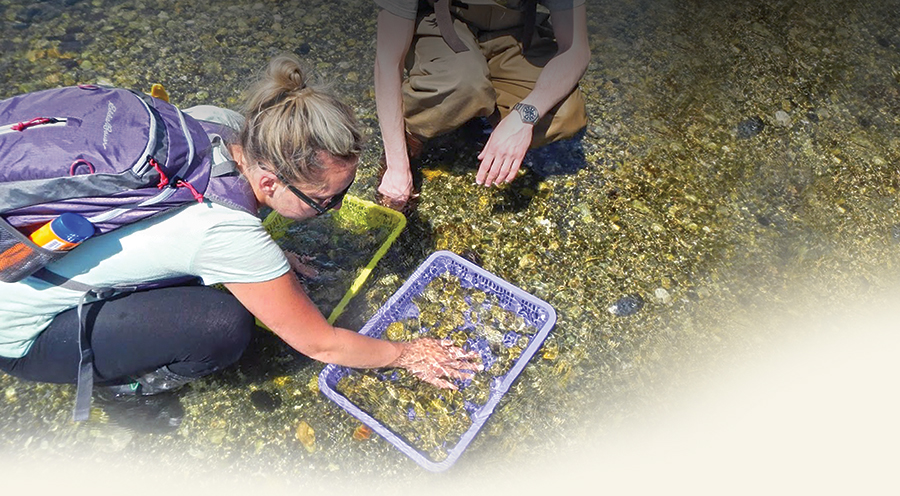
By Max Showalter, WSG Science Communications Fellow
The Olympia oyster — or “Oly” — may be small, but it has played a big role in Washington’s history and culture. As the only oyster native to the region, the Oly once covered vast swaths of the state’s shorelines, and was nutritionally, economically and culturally crucial to indigenous populations for thousands of years. But after Europeans arrived, overfishing and industrial pollution caused the Oly to rapidly decline.
“The story of the Olympia oyster has been almost forgotten,” says Bonnie Becker, associate professor of marine ecology at the University of Washington (UW) Tacoma. “When people ask, ‘why should we restore Olympia oysters?’ there are some strong ecological reasons, but also historical, social and cultural reasons why [restoration] is so important.”
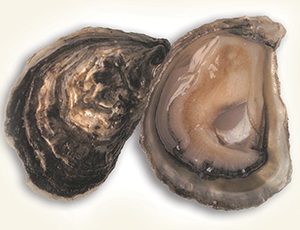
Olympia oyster (Ostrea lurida), actual size.
Efforts to restore the iconic species are underway, but the task remains daunting. Modern populations are scattered throughout the Sound and number only five percent of historical levels. Both Becker and UW researcher Steven Roberts are leading separate WSG-funded projects to help overcome the challenges associated with low, disconnected oyster populations. They hope to inform restoration efforts by tracking where oysters move and how they might adapt to various conditions.
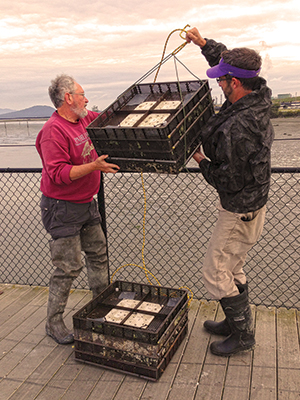
Olys are deployed for a reciprocal transplant experiment. Photo courtesy of Steven Roberts.
Restoration from populations
Oyster restoration can be either passive or active. In passive restoration, ecosystem managers encourage larval oysters to settle in new locations by making the seafloor more desirable. In active restoration, oysters are reared indoors and then transplanted to new parts of the Sound.
To ensure successful active restoration, managers must know which oysters do best under a given set of conditions. For the Oly, that means finding out whether certain populations of oysters are particularly adapted to where they live in the Sound.
Roberts hopes to answer this question by moving oyster populations from one natural bed and rearing them under the conditions of another. The team is looking for adaptive differentiation among Olympias — changes in the oysters’ tolerance to environmental conditions.
“The populations in one embayment might be adapted to warmer temps,” explains Brent Vadopalas, a UW research scientist with the Roberts team. “If you put another population, from a colder environment, in the same embayment, it might not reproduce as well.”
The team sought location-specific differences in oysters from Fidalgo Bay, Hood Canal and South Sound. They saw unexpected results. Although Puget Sound is a small and fairly well-connected place, oysters showed local adaptation, suggesting that populations might not be interacting as much as expected.
“The rate of maturation and the spawn time took us by surprise,” Roberts says. “Irrespective of where they were put, the South Sound oysters spawned earlier by about two weeks.” But the team has some theories about what causes such differences.
Larvae on the move
Why might the Olympia oyster demonstrate local adaptation over such a small spatial scale? One possible answer is limited population connectivity.
Population connectivity measures how often geographically distinct populations interact. For oysters, that means learning how larvae are dispersed and where they settle. “Usually oysters like to settle on other oysters,” says Becker, who investigates patterns of larval movement and settling that drive passive restoration. Understanding such patterns can help resource managers determine where to initiate passive restoration.
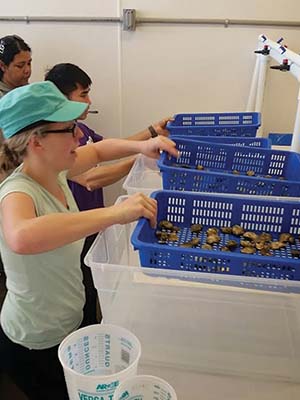
A basket of Olys is prepared in the lab. Photo courtesy of Bonnie Becker.
Becker, along with graduate student Megan Hintz and collaborators, use the chemical makeup of Olympia shells to learn where a particular larva has been over its lifetime. This process is simplified by the Oly’s unique reproduction method. While most marine bivalves release their eggs to be fertilized within the water column, Oly parents retain their eggs through early larval stages until they reach a certain maturation milestone. This trait, known as brooding, means it’s easier to pinpoint a location where the larva grew up.
“While the early larva is being brooded inside its mom, its shell is forming. That shell has elements incorporated into it in some proportion to what’s in the environment,” Becker says. This proportion of elements, measured by a technique called elemental fingerprinting, reflects the conditions under which the shell is formed, giving hints to its location. “It’s like a little flight recorder of where that larva has been.”
Becker explains that so far, the elemental fingerprinting approach has been a success in Puget Sound on a regional level. “Determining if oysters are from North Sound, Central Sound or the Strait of Juan de Fuca using the shell chemistry appears to be working,” Becker says. “Having an empirically proven understanding of how far oysters are dispersing will be a great success.”
A bright future for Oly?
What will success look like for this team of scientists studying the Olympia oyster? The best outcome for their work is to provide resource managers and organizations focused on bringing back the small oyster with a better restoration toolset.
“We wanted to inform managers regarding what meaningful stock structure exists in Puget Sound, and we wanted to inform restoration practitioners about which populations they should use,” Vadopalas says. “These important restoration decisions are ultimately up to resource managers.”
A success for the Oly is a success for the region, Becker adds. “Having healthy oyster populations is important to how the Sound is functioning.”
As the Olympia oyster shows, good things do come in small packages.
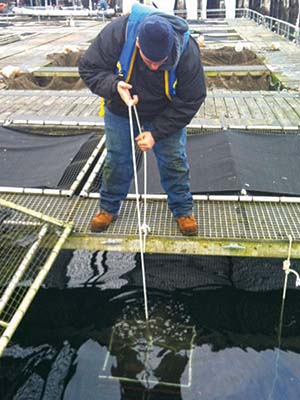
A basket of Olys is repositioned in the water. Photo courtesy of Steven Roberts.